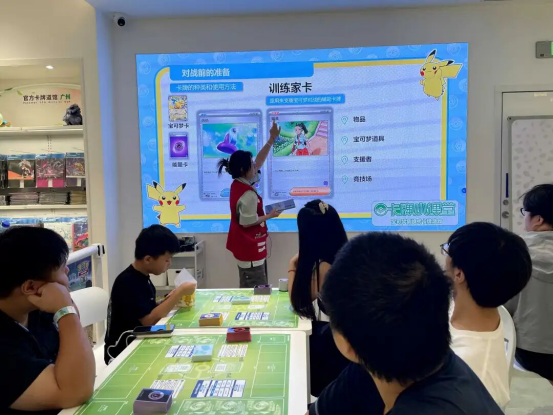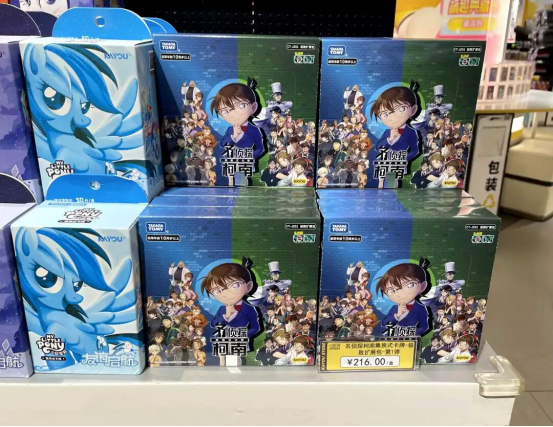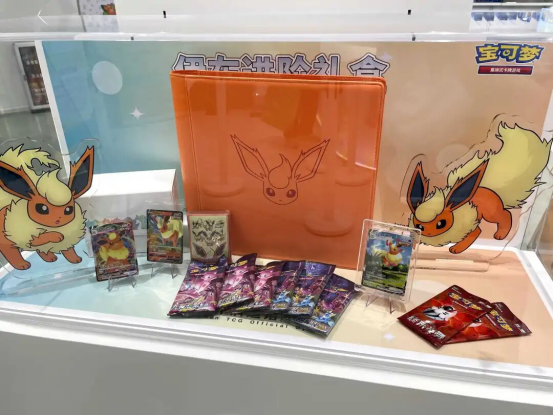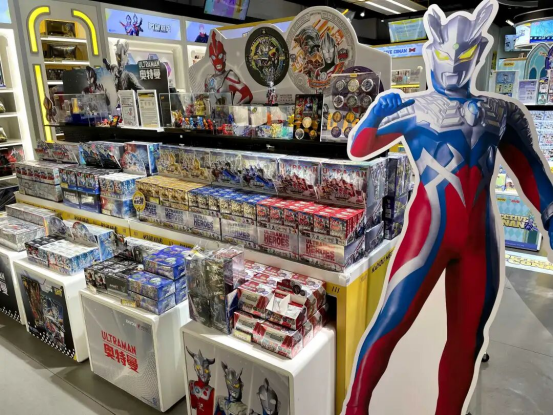“This industry chain is long enough that every link in it does not want to see cards lose their value,” said Mr. Liu, a consumer who spends heavily on both trading cards and sports cards, in an interview with Yicai.
Today, the rapidly developing cultural and entertainment market is embracing unique and diverse products and experiences. IPs with vitality have the chance to stand out. But when scarcity is excessively hyped, when trading detaches from use value, and when consumer behavior becomes irrational, does it follow the same speculative logic as the Tulip Mania?
In 1637, tulips were regarded as symbols of wealth in the Netherlands, and their prices were continually driven up as people hoped for excessive returns. But soon, as sellers dumped tulip bulbs and contracts, the boom collapsed overnight, followed by a chain reaction of panic selling. The tulip market never recovered, and this speculative craze in consumer goods ultimately caused heavy losses to ordinary investors.
From the industry’s perspective, perhaps one day tulip-style bubbles will emerge in cards driven to sky-high prices. When the noise fades, what value can the industry retain for the IP itself?
Intensified Competition in the Trading Card Market
At the end of August, a 1,800-square-meter official Pokémon card gym opened in Guangzhou. In early September, Beijing’s first official Pokémon card gym also opened to the public. On the same day, listed toy brand operator KaiZhiLe International (02122.HK) announced a strategic entry into the trading card (TCG) market, beginning with a cooperation with Pokémon, one of the world’s top IPs.
On the 11th, KaiZhiLe International’s stock price surged over 160% by close. The next day, it continued climbing, once hitting HK$0.395 in morning trading, up nearly 30%. It closed at HK$0.36, an 18.03% increase from the previous day, with trading volumes staying high.
Trading cards appeal strongly to teenagers, but those with stronger spending power may be young to middle-aged adults. Pokémon, a world-class IP born in the last century, now demonstrates its cross-generational influence at the card table. When Yicai reporters visited the Guangzhou Pokémon gym, they witnessed a middle-aged player simultaneously monitoring the stock market on his phone and preparing his card moves in battle. The beginner’s course included young friends pairing up, families of three, and even lone stock traders joining in.

Reporters also observed that evergreen IPs like Detective Conan, Digimon, and Ultraman possess similar “innate qualities” for trading cards. However, they have not replicated Pokémon’s commercial success, suggesting that the trading card market is shifting from rapid expansion to zero-sum competition.
“Digimon’s gameplay is similar to Pokémon, but the store doesn’t stock many Digimon cards,” a shop assistant at Cardyo explained. Digimon’s IP world is vast, with various creatures, characters, and tools, making it structurally capable of supporting a TCG battle system. In some respects, it directly competes with Pokémon.
“In earlier years, before Pokémon officially entered the Chinese market, Digimon cards were being heavily promoted. Manufacturers probably wanted to seize the opportunity during Pokémon’s absence to capture market share. But now that Pokémon has increased its investment in China, it’s uncertain whether Digimon can still stand out,” Mr. Liu said. He added that competitive card battles are already very mature in markets like Japan and may evolve into family board games spanning generations in China.

Jiang Han, a senior researcher at Pangoal Institution, told Yicai that whether the card market can expand further depends largely on changing consumer demand and enterprise innovation. Trading cards themselves have strong vitality, and when design or gameplay innovation is done well, market expansion becomes very likely, boosting investor confidence. When prospects look good, companies can better withstand market pressure.
Reporters noted that leading firm Cardyo is restarting its IPO process, while Kidsland’s collaboration with top IPs has also stirred strong reactions in the capital market. Emerging brand Flash Soul, which has collaborated with games like Genshin Impact, League of Legends, and Identity V, completed its first funding round of several hundred million yuan in August. Its CEO, Sheng Chuan, said the company plans to establish long-term and in-depth cooperation with more global IPs, build a global network, and set up direct or deep cooperation channels in core markets such as North America, Europe, and Southeast Asia.
Industry commentator Zhang Shule told Yicai that although Chinese manufacturing still hasn’t fully leveraged its world-factory advantage in card exports, the market is a blue ocean with explosive potential. He pointed out that domestic stationery brands like Deli and M&G have also entered the sector, expanding into card-related stationery products. Rather than stopping at consumer “itch points” of preference, Chinese card manufacturers are increasingly targeting consumer “pain points.”

Auctioning a Card Worth a House
Reporters found that several factors can drive Pokémon card prices higher in the secondary market. Rare high-value cards from booster packs, Japanese editions with finer materials and finishes, limited first editions, and cards graded highly by professional agencies all fetch higher prices. Cards previously overlooked may regain popularity as new strategies emerge.
Public records show that autographed, first-edition, or non-sale Pokémon cards have sold at auction for hundreds of thousands of dollars. Some netizens remarked that their price could rival a house and, by weight, be more expensive than gold.
Mr. Liu said this pattern is common in sports cards as well: “The rarer, the more expensive. For example, a Kobe Bryant card with his autograph, a patch of game-worn jersey, and the NBA logo could command a high price on the secondary market. If the card is one of a kind, or bears a special serial number like the first, last, or number 24, it will be even pricier. Cards tied to meaningful games, such as a debut, are also very valuable.”
Mr. Liu showed reporters his collection of sports cards, each worth from several thousand to over ten thousand yuan. He noted that most professional grading agencies are based in the U.S., and he is preparing to send his cards abroad for grading through local shops to maximize resale value. However, he doubts the authenticity of some cards circulating in the market, saying that although anti-counterfeit features exist, they are relatively easy to forge.
On resale platforms like CardTao, sports cards priced at several hundred thousand yuan have been seen. When asked whether these prices reflect genuine demand or hype, Mr. Liu replied that the sports card supply chain is long, and every link in it resists cards losing value.
Reporters found that behind the high secondary-market prices of both sports and trading cards lies heavy involvement of capital and market operations. In sports cards, IP licensors and issuers are upstream, such as sports organizations and athletes themselves. Issuers like Panini and Topps design, produce, and distribute the cards. Midstream and downstream, supermarkets and e-commerce platforms sell them to consumers, who open packs and resell single cards, bundles, or at auctions. Professional grading agencies evaluate card condition and market value, while data platforms aggregate card information for enthusiasts. For Pokémon cards, hybrid platforms combining physical cards with NFT technology have also emerged.
“But these systems are not yet established in China. Most sports cards available are brought in by individuals, and grading must be done overseas,” Mr. Liu said. This lack of infrastructure creates risks in buying and reselling, raising doubts about authenticity and value.

Jiang Han believes domestic cards are beginning to show a shift toward “investment/collectibles,” especially on second-hand platforms, where limited or rare cards carry high premiums. Some even yield annualized returns surpassing traditional financial assets. Still, the market remains at an early stage, dominated by consumption and entertainment, with investment secondary. The main consumer groups are teenagers and young adults: students focus on opening packs and collecting characters, while adults pay more attention to rare-card trading and returns. With the establishment of authoritative grading agencies, standardized auction platforms, and tax-friendly collection environments, China’s card market could accelerate toward “financialization.”
A sports card collector told reporters: “While supply often determines value, markets change rapidly. Kobe cards have no new supply, but not all of them are expensive. Each game can push a new star into the spotlight. Only those who understand both basketball and card-market trends can profit. Like investing in companies, choosing the right player requires vision, investing early and small. For card features, go for ‘hard tech’ like holograms or complete logos.”
Small Cost, Big Returns
Card consumption is highly social and identity-driven. Whether selling paper for more than gold or driving mall traffic, the “small cost, big return” strategy of cards is proving effective.
Card gyms bring direct benefits to malls. A representative of Zhengjia Plaza, home to Guangzhou’s first Pokémon gym, told Yicai: “Spaces like Pokémon gyms attract fans, players, and families. They buy products, battle, exchange collections, and experience IP culture. Frequent, sticky behavior boosts mall traffic, dwell time, and spending across restaurants, entertainment, and more.”

The representative added that they see strong growth potential for card-based stores. Partnering with Pokémon gyms is part of their “IP economy” and “experience economy” strategy. Card shops are not just sales outlets—they create novelty with battles, exhibitions, and launches, and generate synergy with other cultural businesses to appeal to Gen Z and young families.
Reporters noted that non-trading card categories are also growing quickly. Cardyo stores display cards licensed from domestic IPs like Jin Yong’s The Legend of the Condor Heroes, the game Love Nikki, and films like Nezha 2. They also sell original IP cards like Cardyo Three Kingdoms, inspired by Chinese tradition.
Industry insiders told reporters that compared to figurines or pillows, the best-selling items are badges and cards—cheap yet visually appealing. Consumers can spend just a few yuan, put badges in a tote bag or slip cards into a phone case, and show them off. While holographic effects look fancy, production costs are low. Making them attractive and affordable is a proven strategy for IP expansion.
Jiang Han emphasized that China’s card market exploded thanks to “Gen Z consumption + social media amplification + mature IP licensing.” Young consumers crave virtual goods, subcultural identity, and social display. Short-video platforms amplified pack-opening and battles, creating a “plant-buy-share” loop. This growth may continue for years but will shift from rough expansion to structured segmentation.

Risks Behind Fast Growth
Irrational consumption, expiring IP licenses, and piracy are major risks in this fast-growing category.
Mr. Liu explained that while a basic 60-card Pokémon deck is affordable, assembling a “good deck” with rare and powerful cards requires endless pack purchases, which is costly. Some rare cards resell at multiples of their original price, and “champion cards” can fetch huge sums.
Some consumers on social media worry about “addiction” to card opening. Jiang Han acknowledged this risk, saying the mechanism easily fosters addictive, irrational spending, which harms the consumer experience.

He stressed that regulation is necessary to improve compliance, protect consumers, and enable healthy development. Enterprises, in turn, must operate transparently and responsibly to reduce risks.
When reporters visited Pokémon gyms and Cardyo stores, they noted a lack of clear age-appropriateness signs. Pokémon’s official mini-program lists card battles as open to “all ages,” and staff confirmed that anyone who buys cards can participate.
Zhang Shule said that unlike expensive blind boxes, cards are cheaper, making them more accessible to students. Since cards are not classified as blind boxes, they avoid age restrictions, further encouraging campus exchange. With schools providing concentrated communities, trading thrives. Cards like Ultraman and My Little Pony are popular with youth, supported by companies but requiring stronger family and school guidance.
Jiang Han noted that card companies must boost innovation. When IP licenses expire, companies lose rights to use them, hurting sales. Cards face low entry barriers and intense competition. Consumer interests change rapidly, and public attention shifts over time.

Ultraman designer Kazuyuki Nakata told reporters that IP competition is fierce globally. While some IPs are planned for 10-year lifespans, trends may cut that short. IPs must keep growing to maintain competitiveness.
Insiders added that piracy remains the greatest threat, as anti-counterfeiting features on cards are weak. Using digital certificates for each card or figure could curb piracy and increase collectible value.
A card priced like a house is reminiscent of tulips once equaling homes. Records show the tulip Semper Augustus sold for 10,000 guilders in 1637, when Amsterdam houses cost only 300–400 guilders. A bulb worth twenty homes vanished into dust with the bubble’s burst.
Whether cards will follow tulips’ fate and whether speculation can return to rationality remains to be seen.
Declaration: This article comes from China Business Network.If copyright issues are involved, please contact us to delete.